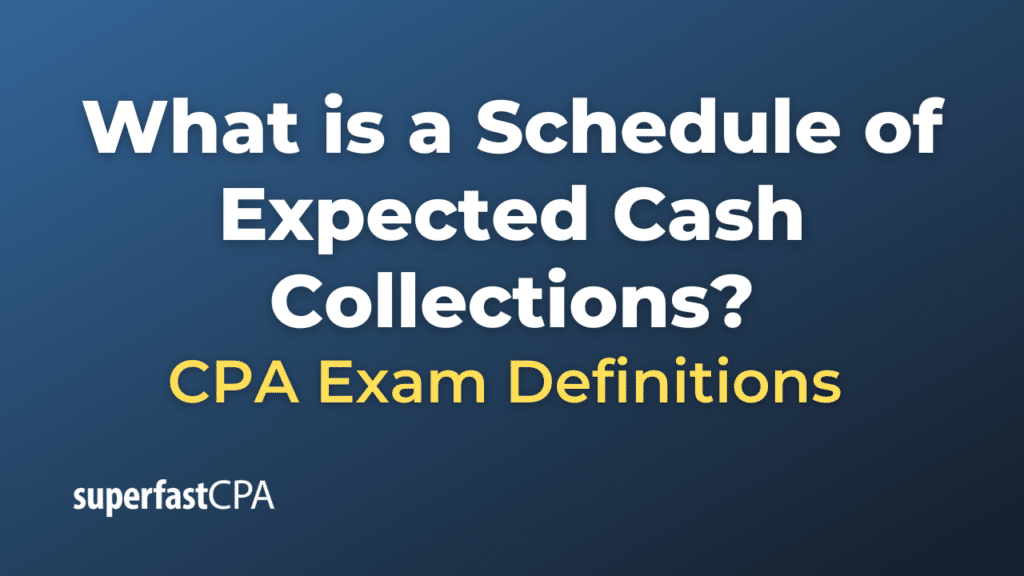Schedule of Expected Cash Collections
A Schedule of Expected Cash Collections is a financial document that forecasts the amounts and timings of cash inflows expected to be collected from customers over a specific period. Typically used as a component of the cash budgeting process, it provides a detailed breakdown of cash receipts from both credit sales and cash sales.
This schedule is crucial for businesses because it aids in:
- Cash Flow Management: Helps businesses anticipate when they’ll receive cash, allowing them to manage their short-term liquidity needs better.
- Budgeting: Forms an integral part of the master budget, specifically feeding into the cash budget.
- Assessing Credit Policies: By analyzing patterns in collections, companies can adjust their credit policies or collection practices.
Here’s how the schedule is typically developed:
- Start with the beginning accounts receivable balance (amounts owed by customers from prior periods that are expected to be collected in the current period).
- Add expected sales (both cash and credit) for the period.
- Multiply credit sales by the percentage expected to be collected in the current month and subsequent months.
- Sum the expected collections.
Example of a Schedule of Expected Cash Collections
Let’s expand on the previous example and forecast the expected cash collections for XYZ Company for April as well.
Data for XYZ Company:
- Beginning Accounts Receivable for March (from January credit sales): $1,000
- March sales forecast:
- Credit Sales = $5,000
- Cash Sales = $2,000
- April sales forecast:
- Credit Sales = $6,000
- Cash Sales = $2,500
Collection Patterns (based on historical data):
- 40% of credit sales are collected in the month of sale.
- 50% are collected in the month after sale.
- 10% are collected two months after the sale.
Schedule of Expected Cash Collections for April:
- Collections from prior months’ credit sales:
- Remaining from March (from January credit sales): 10% of $1,000 = $100
- From March’s credit sales: 50% of $5,000 = $2,500
- Collections from April’s cash sales: $2,500
- Collections from April’s credit sales (collected in April itself):
- In April: 40% of $6,000 = $2,400
Total expected cash collections in April = $100 + $2,500 + $2,500 + $2,400 = $7,500
So, for the month of April, XYZ Company can expect cash collections amounting to $7,500 based on the historical collection pattern and the sales forecasts for March and April.
By following this approach, businesses can effectively estimate their expected cash inflows, which aids in managing liquidity, planning outlays, and ensuring that obligations (like payroll, debt payments) can be met on time.













